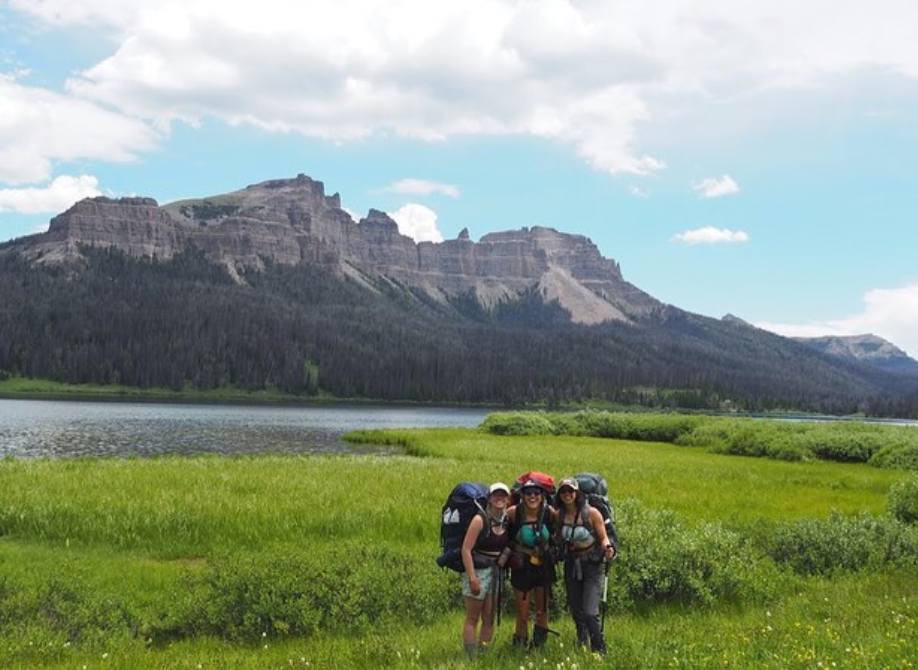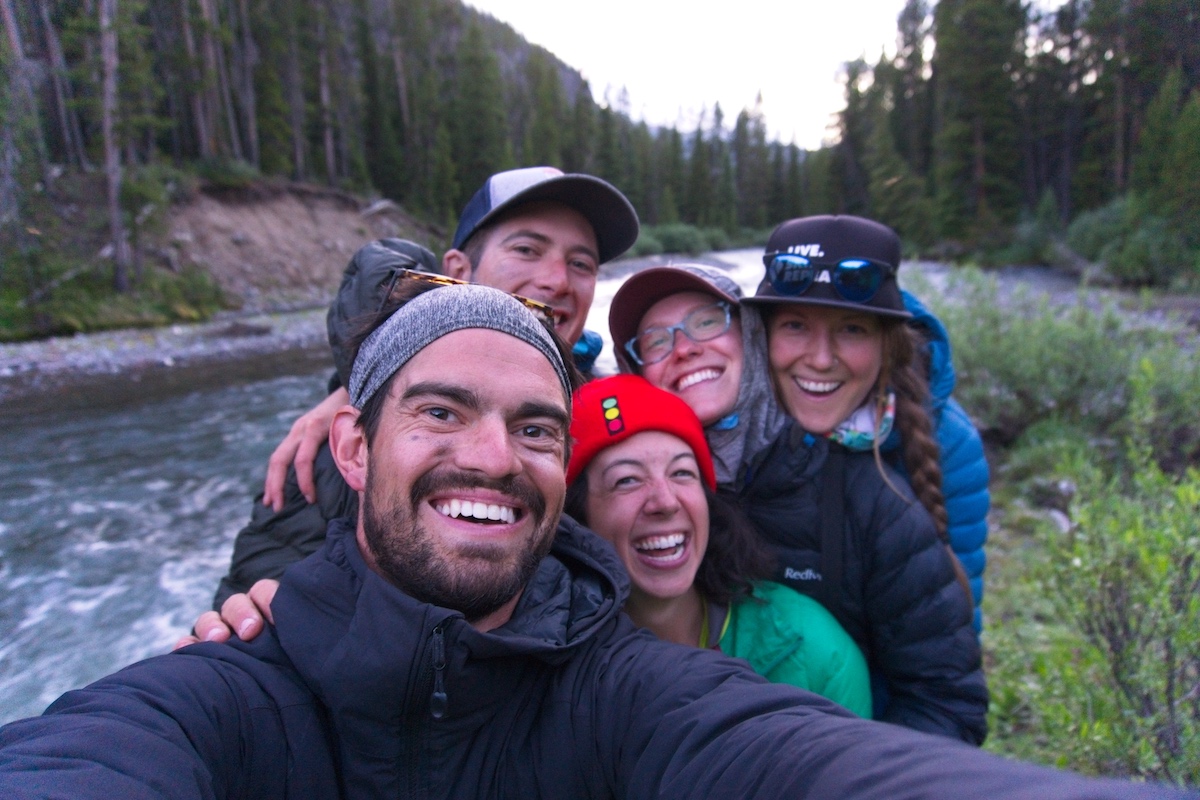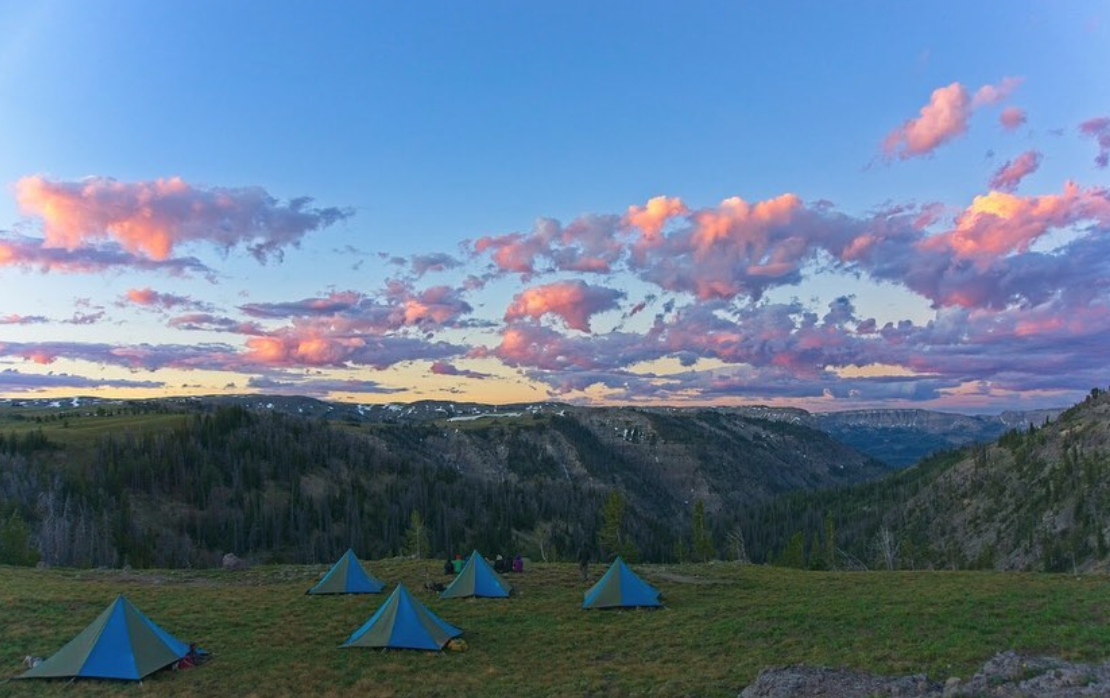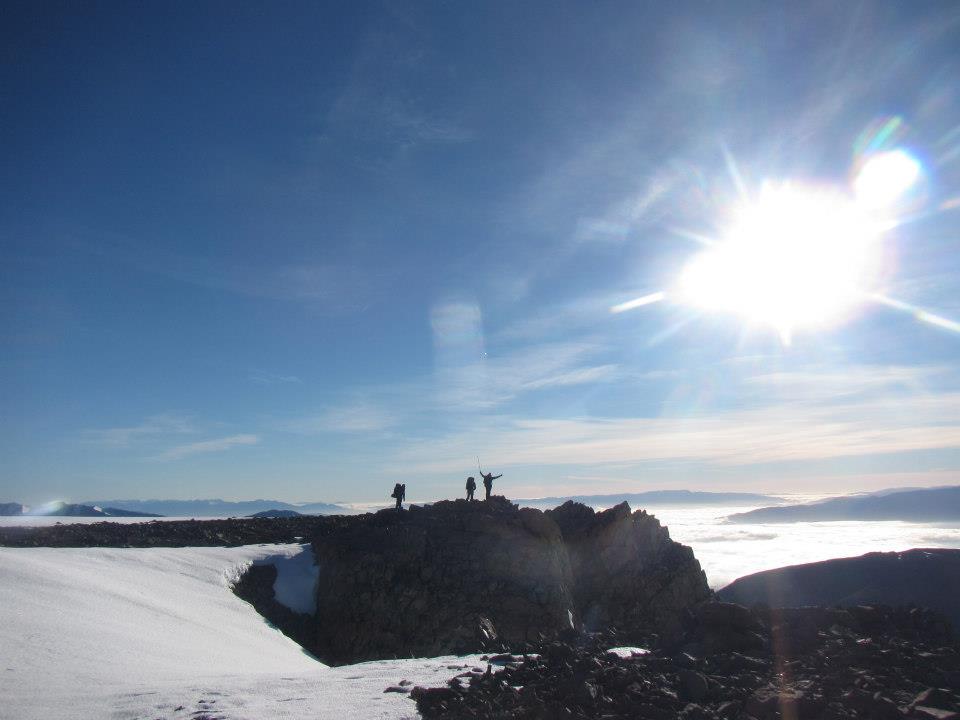
The thunder rolled, the lightning cracked, and I knew I could never lead students in the backcountry on my own.
We’d arrived on the banks of the Yellowstone River midmorning. We’d known pretty quickly that we couldn’t safely cross—the water was deep, murky, and the opposite bank far away from where we stood. Our maps told us there was a footbridge a mile up, so we began traipsing through marshy willows to find it. It quickly became clear that the thin blue lines indicating creeks on the topo map were still quite wide and deep, and we would have to cross several times in order to reach the footbridge.
Complicating matters was Trudy, my open flesh wound, which was not supposed to be submerged in water for fear of infection. I’d fallen trail running a few weeks before my course, and had been hesitantly cleared to backpack by my doctor—as long as I kept it dry, clean, and covered.
I was out in the Absarokas on an Outdoor Educator Course. I was here with the support of my school, where I taught fourth grade and was frequently in charge of groups of students in the field. I was looking to gain more experience as a backcountry leader. I’d spent years in the backcountry on personal trips, and years leading students in the frontcountry, but the demands of instructors become greater the farther out you go. I wanted to feel confident in any situation.

My hiking group of five was trying to join the rest of our cohort at a campsite on the other side of the Yellowstone River. We kept hitting large crossings and backtracking, wondering if we had missed the obvious route through the willowy maze. I had taken a photo of the river valley from up above as we’d come into it, and was trying to help the group orient ourselves by looking at the photo of the river and its tributaries, using large trees as landmarks and trying to determine the easiest, driest route.
My instructor Kathleen wanted us to head downriver, where she thought it would get narrower. I was fairly certain looking at my photograph that upriver, toward the footbridge, was the most straightforward spot. We had already walked around for fifteen minutes, trying to determine our position. I pointed at the tree in the photograph, at the tree in real life. It felt strange, to assert my belief over that of an instructor’s, but the landmarks seemed to check out.
It was at precisely that moment that the storm that had been brewing off in the distance hit us. We pulled out our rain gear, and the feeling of mounting uncertainty seemed to seep in with the moisture. We were in a tenuous situation with no clear correct answer. I looked at Kathleen, who was scanning the river both ways with a furrowed brow.
We were nine days into the backpacking section on our Outdoor Educator course, and all I could think about was that if I were the one in charge, I’d be terrified. I didn’t know what the right answer was—didn’t know how best to proceed to get the group safely to our footbridge. Something inside me sunk. I wasn’t good enough to do this.
After walking up and down the bank of the river through wet sand several times, Kathleen pulled out the GPS.
“It’s a tool, not a crutch,” she’d told us a few days before, when we’d lost the horse trail we’d been following and walked around in circles for a half hour, not wanting to have to rely on technology to find our way. Then, the stakes had been lower—we’d had the clear skies to wander around being stubborn. Today, we needed to get out of the storm.
The GPS provided us with our exact location, and we realized that the path of least resistance was, in fact, upriver.
We trudged in the direction of the lone tree I’d spotted from the hillside, where the river thinned out and it might be the easiest for us to cross. We sent a member of our team across, who determined that Trudy the Flesh Wound would stay dry, and as the rain pelted us from above, we crossed the river.
We arrived on the other side, feeling charged with energy, laughing.

This was my second NOLS course, the first being a semester in New Zealand seven years prior. A phrase the Kiwis like to use is to “get amongst it,” meaning to fully immerse yourself in a situation. It was one of the first moments in the Absarokas that I’d felt like we were truly amongst it—in the middle of a storm, trying to cross a massive river, unsure of where we were. It doesn’t get more NOLS than that.
We debriefed the experience right there on the beach, talking through how we’d felt, how we’d made decisions as a group, what we could take away from the experience.
I asked Kathleen the question that had been weighing on me—what do you do as a leader when you don’t know the answer?
Kathleen, a former military powerhouse, always seemed calm, cool, collected, and incredibly competent. She was the kind of leader who put everyone at ease with her skills, knowledge, and expertise.
“You’re not always going to know the answer,” she told us.
This felt like the most terrifying concept in the world to me—to be out in the backcountry with a group of students who were relying on you and not sure what to do. I had assumed that to be a competent field instructor, it would be necessary to know what to do at all times, in all situations.
“You’re not always going to know what to do,” she repeated. “Sometimes you have to deal with a situation as it comes and make the best judgment call you can. And then debrief it, and learn from it.”
.jpg)
I thought of the day before, when I’d been the designated leader and we’d lost the trail. I’d felt personally responsible for not knowing exactly where to go, and felt like a less capable leader because of it.
In that moment, though, I realized the power of Kathleen sharing this with us. I found that in her admitting that she hadn’t known exactly where we were or the best way to proceed, I actually respected her and related to her more than I would have if she’d pretended to be omniscient. And the experience we’d had would latch itself onto us in a more profound way because of the uncertainty, because we’d all figured it out together.
I realized I might not actually be confident in every situation in the field, nor should I expect to be. All I could do was arm myself with as much knowledge and experience as possible, and try to figure it out from there.
Researcher and writer Brene Brown defines vulnerability not as weakness, but “as emotional risk, exposure, uncertainty. It fuels our daily lives.” It is “having the courage to show up when you can’t control the outcome.” It is a gift we can give our students as leaders, if we are brave enough to stand in the storm and not know exactly where to cross the river.

Grow your leadership skills on an outdoor educator expedition
- Leadership Skills
- Skills
- Backpacking
- Outdoor Educator
- Nols Expeditions
- Stories
- Student Stories
- Leadership
- Covid 19
Written By
Carolyn Highland
Carolyn Highland is a teacher and writer living in Truckee, California. When not taking her fourth grade students at Tahoe Expedition Academy (www.tahoeexpeditionacademy.org/) into the field, she can be found skiing, trail running, climbing, mountain biking, backpacking, jumping into alpine lakes, and then writing about it. Carolyn is a graduate of the 2012 NOLS Semester in New Zealand and the 2019 Rocky Mountain Outdoor Educator Course. You can follow her on Instagram at @c_highland



